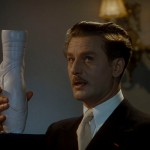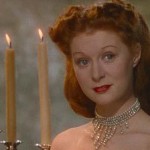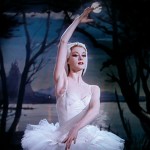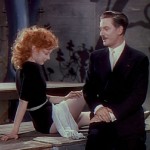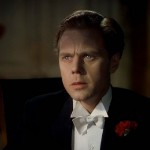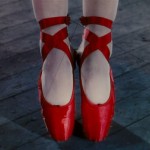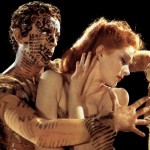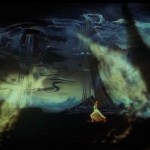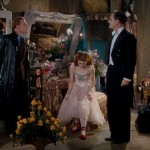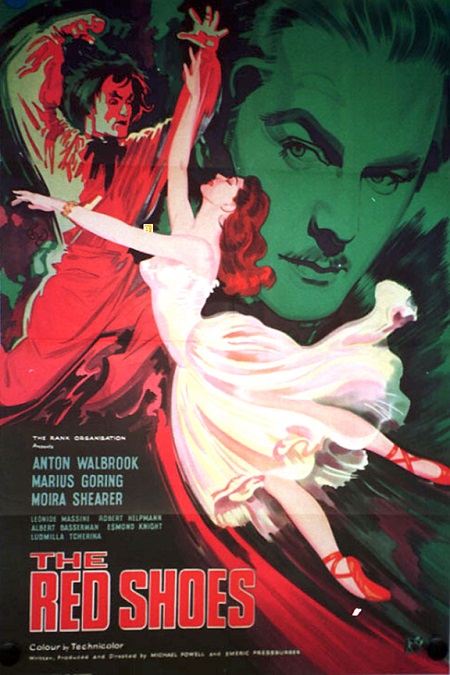
The Red Shoes – 1948
The first thing that comes to mind when I think of The Red Shoes is the term Art Film. This was a piece of art. The lead actress, Moira Shearer, not only had to look gorgeous, but she had to be able to act a very dramatic role, and dance her feet off.
Sure, we have seen other dance films strutting their stuff at the Academy Awards – mostly Fred Astaire and Gene Kelly. But their style of dance was a very Hollywood style. Their dancing was jazz dance and tap. They both used elements of ballet, but neither was true ballet. Shearer was a real ballerina. Her dancing was pure ballet.
Now, I have never been a huge follower of the art form, but I must say that the dancing in The Red Shoes was phenomenal. To my uneducated eyes, the dancing was graceful and fluid, complex and incredibly physically demanding. And nobody in the cast had a more difficult job than Shearer. She was wonderful to watch, even for a guy like me, who knows nothing about the world of professional ballet.
The story is loosely based on the gruesome fairy tale by Hans Christian Anderson, The Red Shoes, in which a vain young girl loves her red shoes so much that she wears them everywhere. Even when her step-mother is ill, she wears them to a party. Then the shoes start to relentlessly dance on their own, forcing the girl to dance herself to death. So let that be a lesson to all you young girls out there. Beware of vanity!
But the filmmakers wrote a modern story about Vicky Page, played by Shearer, a ballerina who has the potential to be a great star, thanks to the patronage of and guidance of the impresario of the ballet, Boris Lermontov, played by Anton Walbrook. He takes her under his wing and molds her into the best dancer the world has ever seen. The only trick is that she can never marry, for such a thing would ruin her as a ballet super-star.
The plot has also been following the character of a brilliant young composer named Julian Craster, played by Marius Goring, who Lermontov employs with similar promises of greatness. He commissions Julian to write the ballet, The Red Shoes, as a vehicle for Vicky to attain her stardom. So what happens? Of course, Lermontov’s two young protégés fall hopelessly in love with each other. They marry and Vicky leaves the ballet.
The ballet sequence was really the film’s highlight. It was a 15 minute long sequence that had surprisingly good special effects, wonderful music that was written specifically for the film by composer Brian Easdale. Within the ballet, Vicky’s beautiful dancing took her from the stage to various surrealistic landscapes, dancing with figures made of cellophane, making several costume changes, and watching fellow dancers blink in and out of existence, as only the medium of film can do. It was beautiful to watch.
The trouble was that this was only about half way through the movie. The ballet was the starting point for the romance between Vicky and Julian. But it was also the last of the movie’s dancing. It nearly made the rest of the film anti-climactic.
The rest of the film covered the romance and the tragic consequences of the romance, culminating with Vicky’s suicidal death. It was a cleverly written, though vague, mirror of the original fairy tale, in which Vicky’s dancing became more important to her than the love of her life. At that point, knowing that her husband, Julian, is leaving her for good, and knowing that she cannot stop dancing, even for him, she kills herself.
Her death scene was a little more gory than I was expecting, which I totally respect. In Hollywood, during those decades of filmmaking, when a character is run over by a horse carriage or falls from a high building, there is generally no blood. No need to disturb the audience with believable blood and gore.
But The Red Shoes took a more realistic angle. After Vicky threw herself from a balcony to get hit by a passing train, she should be pretty messed up, physically, and she was! Sure, they didn’t show severed limbs or protruding bones, but she did have blood all over her, bloody scrapes and cuts, and her clothes were shredded. That’s more than most movies would have shown, so kudos to this one.
Just as an interesting little note: In the film’s ballet of The Red Shoes, the exhausted dancer is at death’s door and asks a priest to remove the shoes. When he does, she dies. In Hans Anderson’s original fairy tale, the girl asks an executioner to cut off her feet, which he does. But even then, the severed feet continue to dance in the shoes, blocking her from going to church to ask God’s forgiveness for her vanity. Wow, Mr. Anderson… Wow.
